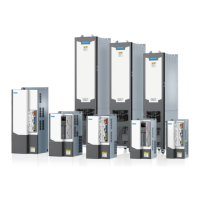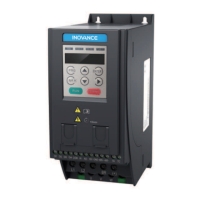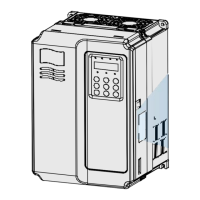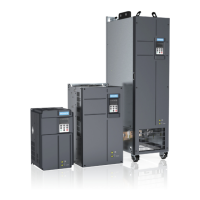CANopen and CANlink Communication
‑39‑
RPDO4 — 0x500+Node‑ID
TPDO1 — 0x180+Node‑ID
TPDO2 — 0x280+Node‑ID
TPDO3 — 0x380+Node‑ID
TPDO4 — 0x480+Node‑ID
● EMCY object: 0x80+Node‑ID
Node‑ID: Device ID (station address) set by Fd‑13.
Communication objects are defined as follows:
● NMT
A network management object (NMT) includes Boot‑up messages, Heartbeat
protocol, and NMT messages. Based on the master‑slave mode, an NMT is used to
manage and monitor nodes in the network and implements three functions: node
status control, error control, and node activation.
● SDO
A service data object (SDO) enables you to access items in the device object
dictionary by using an index and sub‑index. An SDO is achieved through a CMS
object of the multi‑element domain in CAL and allows transmitting data in any
length. When exceeding four bytes, data is split into several packets. The SDO
protocol produces a response for every request. SDO request and response
packets always contain eight bytes.
● PDO
A process data object (PDO) is used to transmit real‑time data from one node to
one or multiple nodes. The data length ranges from one to eight bytes. Each
CANopen device contains eight default PDO channels, four TPDO channels, and
four RPDO channels. A PDO supports synchronous and asynchronous transmission
modes, depending the corresponding communication parameter of the PDO. The
content of a PDO message is pre‑defined and depends on the corresponding
mapping parameter of the PDO.
● SYNC object
A synchronization (SYNC) object is a packet that is broadcast to the CAN bus
periodically by the CANopen master. It is used to achieve basic network clock
signals. Each device determines whether to perform synchronous communication
with other network devices using this event according to its own configuration.
CANopen Packet Format
● NMT module control packet
Only an NMT‑Master node can send an NMTModuleControlNMT packet. "
Table 3–1
NMT packet format
"
on page 40
shows the packet format. COB‑ID is "0x000". Data0

